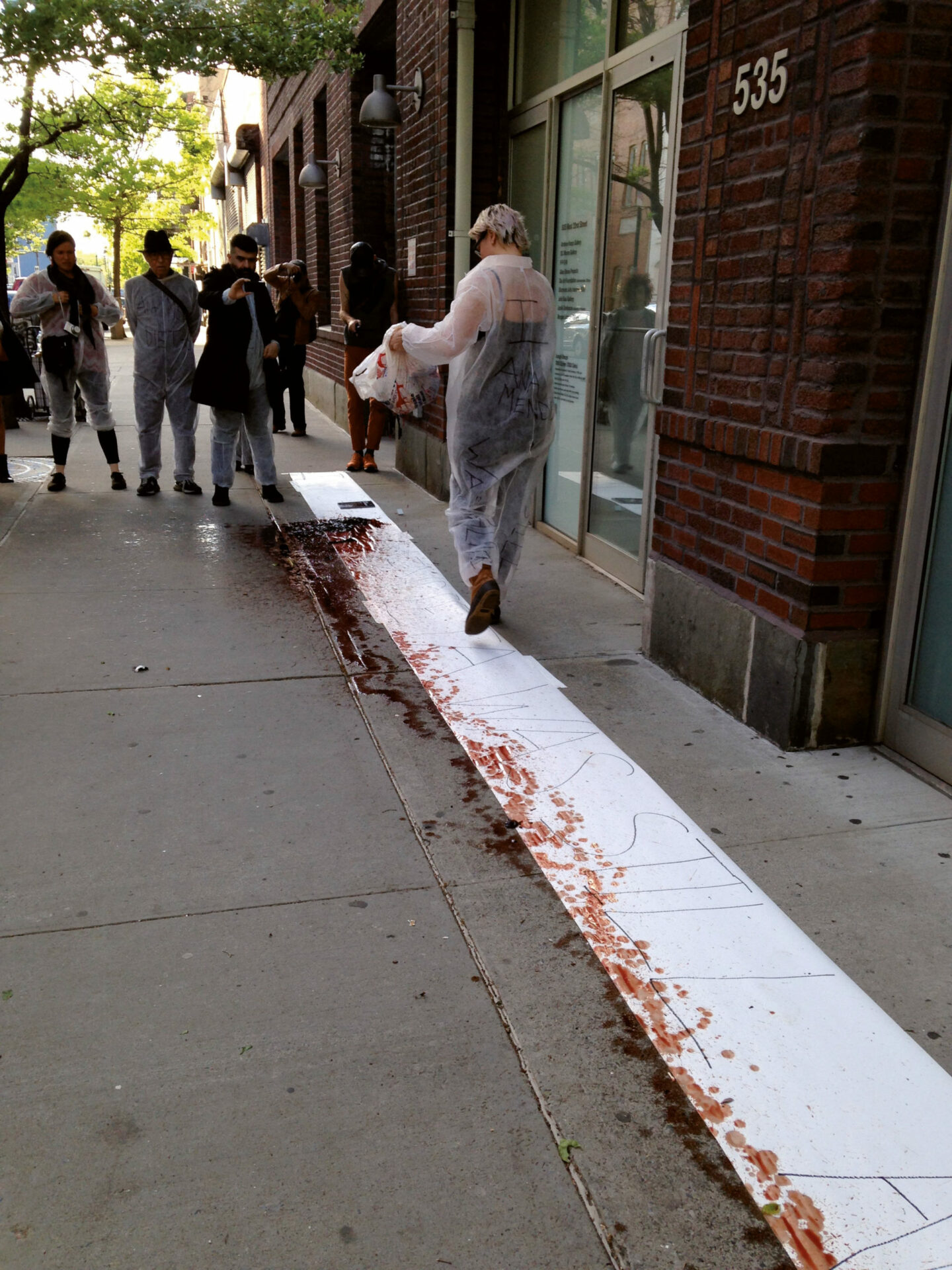
Photo : © Jillian Steinhauer (first published on Hyperallergic)
The Weeping Wall: The Mendieta Case
Although Andre’s reception in Europe appears to have remained generally unaffected by Mendieta’s death, his exhibitions in the New York vicinity have been repeatedly hijacked and disrupted by groups of feminists and Mendieta fans. Whether Andre’s contribution to art ought to be ignored or scorned by cultural institutions on the basis of unsubstantiated accusations is a debate that will leave us empty-handed. No one knows what truly happened on that late-summer morning in 1985. What remains unacceptable, however, is yet another example of a woman’s career being defined by the relative success of her husband, of a female artist’s legacy overshadowed by her tragic biography while her husband’s work remains relatively untouched by it. The Mendieta/Andre story follows a pattern of unfairness. This prejudicial paradigm is equally discriminatory if we consider its reverse in the case of Yoko Ono and John Lennon: over thirty years after Lennon’s death, the reception of Ono’s work is still far too often defined by the memory of her deceased husband.

